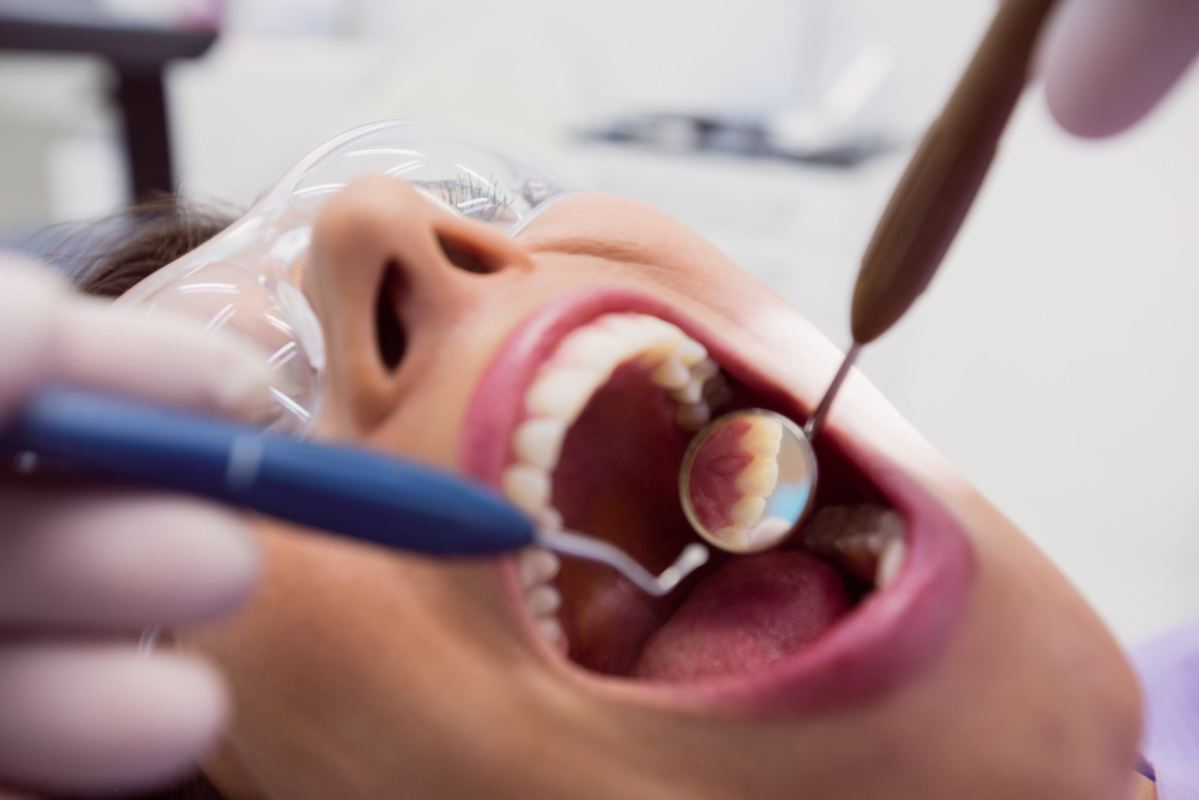Key Takeaways
- Age is not a determining factor for gum grafting procedures.
- Severe gum recession may make gum grafting no longer feasible.
- The success of gum grafting depends on the extent of gum damage and bone loss.
- Alternative treatments like dental implants may be recommended when gum grafting is no longer an option.
Embarking on a journey of oral health often leads to questions about procedures such as gum grafting. One common inquiry is, When is it Too Late for Gum Grafting? Understanding the factors and timelines involved in this dental procedure is essential for making informed decisions about gum health. In this exploration, we delve into the considerations surrounding the timing of gum grafting and shed light on when it may or may not be advisable.
Age Limit for Gum Grafting
Age is not a determining factor when it comes to gum grafting procedures. Instead, the procedure’s success depends on the extent of gum damage and bone loss. Gum grafting is typically performed to treat receding gums, which can lead to tooth sensitivity, root exposure, and even tooth loss if left untreated.
There are three types of gum grafting: connective tissue graft, free gingival graft, and pedicle graft. The specific type of graft used will depend on the individual’s needs and the condition of their existing gum tissue.
Dental implants may be recommended instead of gum grafting in advanced cases with significant gum and bone loss. However, age alone does not determine whether gum grafting is no longer an option. The decision to choose dental implants over gum grafting is made based on the overall oral health and the feasibility of successful grafting.

It is important to note that gum grafting complications and failure are rare if performed by an experienced surgeon and following post-op instructions. Therefore, gum grafting can be a viable option for individuals with receding gums regardless of age.
Advanced Gum Disease and Grafting
When dealing with advanced gum disease, it is crucial to consider the viability of grafting as a treatment option. Gum grafting and healing is a surgical procedure that aims to restore gum tissue lost due to gum recession caused by periodontal disease. However, in cases of advanced gum disease with significant gum and bone loss, gum grafting may not be effective in preventing further tooth loss or improving oral health. Here are three crucial points to consider:
- Severity of gum and bone loss: Advanced gum disease can lead to extensive gum recession and exposed tooth roots. If there is extensive gum and bone loss, grafting may not be a viable option as there may not be enough healthy dental tissue to support the graft.
- Risk of complications: Grafting in the presence of advanced gum disease carries a higher risk of graft failure, infection, or poor healing. These complications can further compromise oral health and may require alternative treatment options.
- Alternative treatments: In cases of advanced gum disease, tooth removal, and dental implants may be the best course of action. Dental implants offer a more stable and long-lasting solution for replacing missing teeth and restoring oral function.
It is essential to consult with a dental professional to assess the severity of gum disease and discuss the most appropriate treatment options. Early intervention is critical to preventing irreversible damage and tooth loss.
Effects of Gum Disease on Grafting
To determine the viability of grafting as a treatment option, consider the detrimental effects of gum disease on the procedure’s success. Gum disease, also known as periodontal disease, is a common dental problem characterized by inflammation and infection of the gums. This condition can have significant consequences for oral health, including the need for gum grafting.
Gum disease can lead to gum recession, which is the loss of gum tissue that exposes the roots of the teeth. This recession affects the smile’s appearance, causes tooth sensitivity, and increases the risk of dental problems such as cavities and tooth loss. Gum grafting is a surgical procedure that aims to restore the lost gum tissue by taking tissue from another area of the mouth and grafting it onto the affected area.
The success of gum grafting can be hindered by the effects of gum disease. The extent of gum damage and bone loss caused by advanced gum disease may make the procedure less effective. In severe cases, tooth removal and the consideration of dental implants may be necessary as a better option.
It is essential to consult with a dentist or periodontist to assess the severity of gum disease and determine the best treatment approach. Early intervention and proper oral hygiene can help prevent or manage gum disease, reducing the need for gum grafting and its associated complications.

Health Considerations for Gum Grafting
To guarantee successful gum grafting, prioritize overall health before the procedure. Here are three important health considerations to keep in mind:
- Oral Health: Proper oral hygiene is crucial before getting a gum graft. Brushing and flossing regularly will help reduce the risk of infection and promote healing after the procedure. Treating any existing gum disease or tooth decay before undergoing gum grafting is imperative to ensure maximum chances of success.
- Timing of Gum Grafting: It is important to seek gum grafting at the earliest signs of gum recession. Delaying treatment can lead to further gum damage and even tooth loss. Consulting with a dentist or periodontist is recommended as soon as you notice gum recession symptoms, such as tooth sensitivity or longer-looking teeth.
- Overall Health: Your overall health plays a significant role in the success of gum grafting. Conditions such as diabetes or immune disorders may affect the healing process. Informing your dentist or periodontist about any medical conditions or medications you are taking is crucial for evaluating your suitability for the procedure.
When Grafting Is No Longer an Option
If gum damage and bone loss have progressed to an advanced stage, you may no longer be a candidate for gum grafting. When gum recession is detected and you are experiencing symptoms, you must seek treatment from a dentist or periodontist immediately. Gum recession is a common condition where the gum tissue surrounding the teeth pulls back, exposing the tooth root and leading to tooth sensitivity, decay, and potential tooth loss if left untreated.
In severe cases of gum recession, where significant gum and bone loss have occurred, gum grafting may no longer be an option. This procedure involves taking tissue from another part of your mouth, typically the roof of your mouth, and grafting it onto the receding gum area to restore your gums and achieve optimal oral health. However, gum grafting may be impossible if the damage is too extensive.
If gum grafting is no longer an option, your dentist or periodontist may recommend alternative treatments such as dental implants. Dental implants are artificial tooth roots surgically placed into the jawbone to support replacement teeth. This option provides a permanent solution for tooth loss and can help restore function and aesthetics.

Optimizing Oral Health: Diet, Surgery, and Aftercare
Maintaining oral health, especially for elderly patients, involves a combination of a healthy and balanced diet and proper dental care. Surgical techniques, including synthetic materials, may address specific issues. Proper brushing techniques contribute to overall oral hygiene. Aftercare following procedures, guided by aftercare instructions, is crucial for optimal results, including forming a stable blood clot and promoting healthy blood flow.
Choosing soft foods and incorporating excellent foods into the diet during recovery aids in comfort. Ongoing dental checkups ensure proper care and allow for adjustments as needed. Emphasizing a holistic approach, including a balanced diet, appropriate surgical techniques, and consistent dental care, contributes to the long-term well-being of oral health.
Read More About
https://www.ncbi.nlm.nih.gov/pmc/articles/PMC4907322/
http://www.myhealth.gov.my/en/periodontal-disease-and-aesthetic/
Final Thoughts
In conclusion, deciding when it is too late for gum grafting depends on various factors, primarily the extent of gum damage and bone loss. While age is not a determining factor, severe gum recession may render gum grafting less feasible, prompting consideration of alternative treatments such as dental implants. It’s essential to heed your dentist’s advice and undergo gum grafting as recommended to prevent further complications.
The effects of advanced gum disease can impact the procedure’s success, making early intervention crucial. Good oral hygiene and overall health are essential for successful gum grafting. If gum damage has progressed significantly and gum grafting is no longer an option, alternative treatments like dental implants may be recommended. Therefore, proactive oral care, timely intervention, and considering alternative options when necessary contribute to optimizing oral health for a confident and healthy smile.

